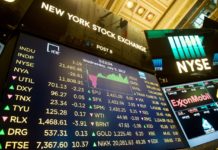This strategy shouldn’t still work, but in most years it does.
It’s safe. It generates a high income from dividends. It’s simple and easy – you think about it only once a year (early in January).
What’s not to love?
The original book by a top money manager came out in 1991, so you may have heard of this strategy. However, it continues to work – most years.
And, even when it doesn’t “beat” the Dow, you still own large, proven and successful companies and receive large dividend checks.
Therefore, I’m comfortable suggesting you try it – instead of hoping to capture a one-month only profit from the January Effect.
The only flaw is that sometimes you will have to pay capital gains taxes when you sell a profitable stock.
I believe it still works because it involves only stocks in the Dow Jones Industrial Average. Because these are so large and well-established, the gunslinger-type fund managers and traders scorn it. It doesn’t produce the huge gains they’re looking for.
Besides, hedge fund managers charge 20% per year, and who’s going to pay a fund manager that much money to do something they can do for themselves in one hour every January?
The people who believe the market is efficient won’t even try this strategy out.
It’s called the Dogs of the Dow.
What is the Dogs of the Dow Strategy?
The Dow Jones Industrial Average consists of 30 large, well-established companies. Dow companies come and go over time, but, unlike new and small companies, none of them are going to go bankrupt overnight. (They can go out of business, but it takes years to decades, and they’re removed from the index before they actually go belly-up.) They’re all blue chips.
That’s why this is such a conservative strategy.
Dow stocks are proven companies. Yes, they can and do go down. But when the market crashes, they go down less than most small companies. Also, their businesses are too large, established and successful to be endangered by recessions.
When the economy crashes, some stocks paying dividends stop. They no longer have the cash.
All Dow companies pay dividends, and they’re the ones most likely to continue paying dividends through a bad economy. They have the resources to remain in business, to remain at least somewhat profitable and to continue to both pay a dividend and survive.
If you bought only the Dow Jones Industrial Index, you would do well.
But what if you could get an even better return by buying only the 10 Dow stocks that would give you the highest return in the next year?
Look for the 10 “Cheapest” Dow Stocks
Most investing experts agree a lot of stock investing success comes from buying good stocks at low prices.
In many cases, however, stocks are cheap because they’re on their way to going out of business. Not a good idea.
Well, the Dow companies aren’t going out of business, not without a lot of forewarning.
So the premise of the Dogs of the Dow strategy is simple.
Every January, buy the 10 cheapest Dow companies, and hold for one year.
“Cheap” is Based on the Company’s Dividend Yield
The 10 Dow stocks with the highest dividend yields are the “cheapest.” They’re giving the highest ROI on their current market prices.
For many companies, this would be a risky strategy. A high dividend yield means a low market price – which means the company is in trouble.
But, remember, the Dow companies are blue chips.
It’s possible for a dog company to go downhill so far it’s removed from the Dow Jones index. That happened in 2018. But it’s rare.
This January:
Find out the dividend yields for the 30 Dow stocks as of the last trading day of December. (There’re entire websites devoted to this strategy, so you won’t have to carry out this research yourself.)
Buy the 10 Dow stocks with the highest dividend yields.
Hold. Cash your dividend checks.
Next January:
Repeat.
Many of last year’s Dow dogs will probably be on the list again. Just keep them.
If some of last year’s Dow dogs are no longer on the list, they’re now relatively higher in price. Sell them.
Use the money to buy the other dogs.
Hold. Cash your dividend checks.
Etc. Etc. Etc.
The Idea is to Maximize Your Return from the Safe Dow Stocks
The originator, Michael O’Higgins, back-tested the strategy and found it worked well over long periods. It did fail to beat the overall Dow 2007, 2008 and 2009. However, you can argue those were highly unusual years – the period of the Great Financial Crisis.
It’s worked well since then.
People have argued against it. They say investors ought to add other criteria, and use price weighting and . . . they want to take away one of the Dogs of the Dog’s biggest virtues: simplicity.
It provides a good, safe and high return for about one hour of work early every January.
If you invested $10,000 into the entire Dow Jones in January 2008, and held those stocks through the end of 2018, you would have $17,350.
However, if you’d invested that $10,000 into the Dogs of the Dow during that same period, you’d have wound up with $21,420.
It’s important to note, however: in bad years for the market, you can still lose money. In 2018, the Dogs of the Dow strategy lost LESS than the overall Dow Jones index. But it still lost money.








